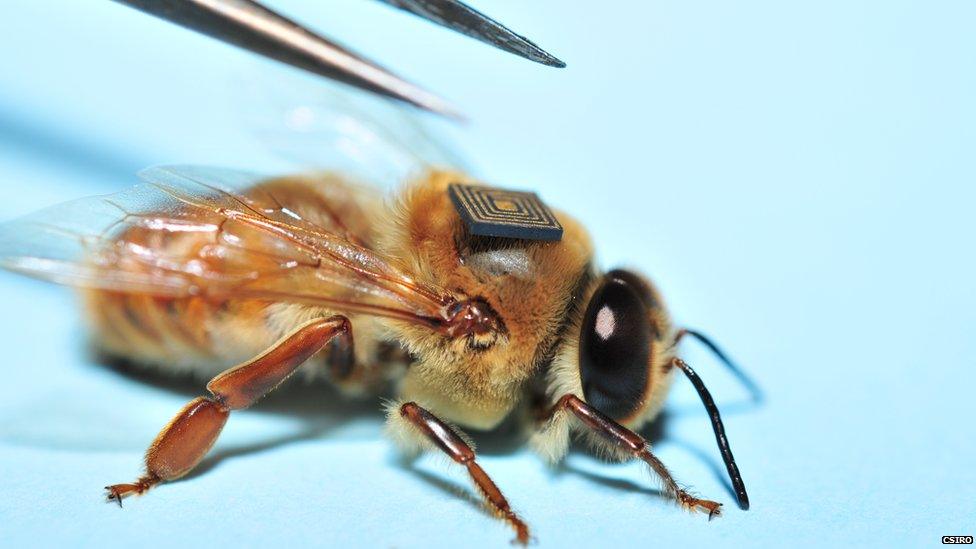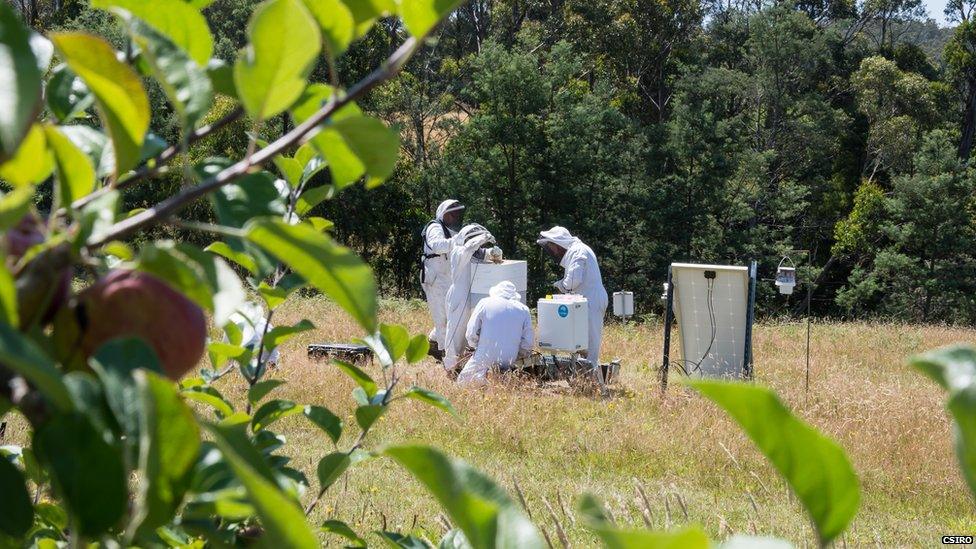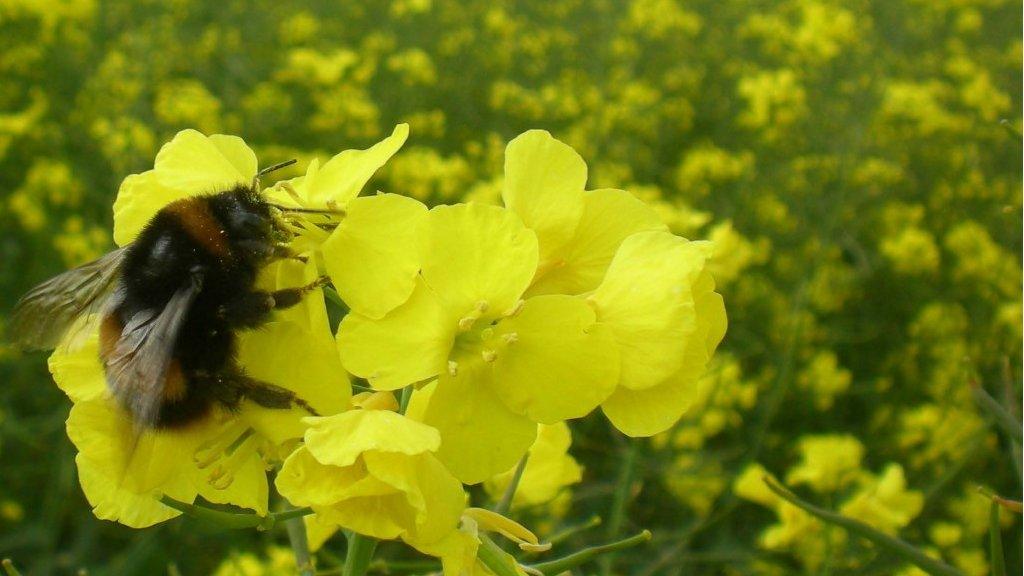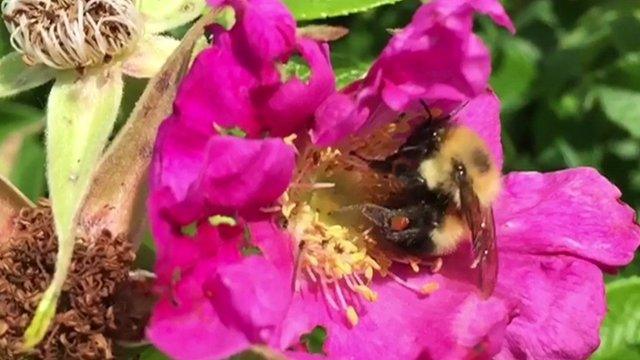Tiny trackers could help solve global bee death mystery
- Published

Researchers are using micro sensors to learn about the problems bees face
An international group of scientists, beekeepers, farmers and technology companies is using cutting-edge technology to help find out why honey bee populations around the world are crashing.
Minuscule sensors have been glued to the backs of 10,000 healthy honey bees around the world to help understand why huge numbers of bees are dying.
Like electronic tags that track the movement of cars through toll roads, these tiny trackers send information back to receivers half the size of a credit card that are strategically placed at bee hives.
Australian researchers involved in the global research project compare the sensor to an adult carrying a backpack, weighing about a third of what a honey bee can carry.
But unlike the average backpacker, this extra load will remain in place for the rest of the bee's life.
Mass deaths
The microscopic technology has been developed in Tasmania by Australia's Commonwealth Scientific and Industrial Research Organisation (CSIRO) over the past two years as part of an international research project investigating bee health.
Around the world, wild bee populations have plummeted thanks to habitat loss, pesticides and diseases, say scientists.
That puts crops that need to be pollinated at risk, says CSIRO Science Leader Professor Paulo de Souza.

Scientists don't know enough about bees, says Prof. de Souza
"In some parts of the world, a healthy hive of bees can be like clockwork one day, and then every single bee is dead the very next day, and we have no idea why," Prof. de Souza told the BBC.
"It's happening so frequently that it's now a syndrome called colony collapse disorder, and no scientist working alone would be able to solve this," he says.
A predatory mite called the Varroa destructor has killed many colonies over the past decade.
Australian honey bees have so far remained immune to the devastating mite, putting Australia in an ideal position to coordinate a global research effort, says the CSIRO team.
The tiny sensors they have developed weigh just 5.4 milligrams. They contain a battery that generates energy by vibration, and record a bee's time away from the hive and the distance each bee travels.

The Varroa mite is one of many threats to honey bee colonies
Each sensor will record a bee's exposure to pesticides, air pollution and water contamination, as well as taking note of the insect's diet and the weather.
Bees are normally predictable creatures, so changes in their behaviour can indicate stress factors or a change in their environment, says Prof. de Souza.
"The bees fitted with sensors aren't able to carry as much pollen, but we do learn a lot about the bees by doing this," he says.
'Constant fear'
Australia's honey bee industry lives in constant fear that border protection authorities could fail to detect diseased bees in containers entering the country.
Australia's horticulture and agricultural industries are particularly vulnerable to declines in honey bee populations because they rely on unmanaged feral honey bees for much of their crop pollination.
CSIRO pollination researcher Dr Saul Cunningham says Australia's managed bee pollination services would find it difficult to meet the extra demand required to replace the key role unmanaged honey bees play in pollinating crops.
"So the outcome would likely be a drop in crop production and a rise in prices of popular food staples like fruit and vegetables," he said in a statement.

Managed bee colonies can't do all the pollination work
The Tasmanian honey bee was tagged first, while scientists in Brazil, Mexico, New Zealand and the UK have joined the initiative in recent months.
The research findings will be shared with the global scientific community, next year.
"It's not just the Varroa mite that's an issue; other stressors could be wiping out honey bee colonies," says Prof. de Souza.
"We just don't understand the combination of stressors that affect honey bees, and we don't know why bee numbers are declining around the world. They might go through extinction; we just don't know," he says.
"There are many interesting aspects that make honey bees so interesting and attractive to us.
"How they are organised, the way they are devoted to the queen and their hive, and how they collaborate. There are many lessons to learn about how these insects work, live and strive."
Nina Hendy is a Tasmania-based writer
- Published23 April 2015

- Published10 July 2015
